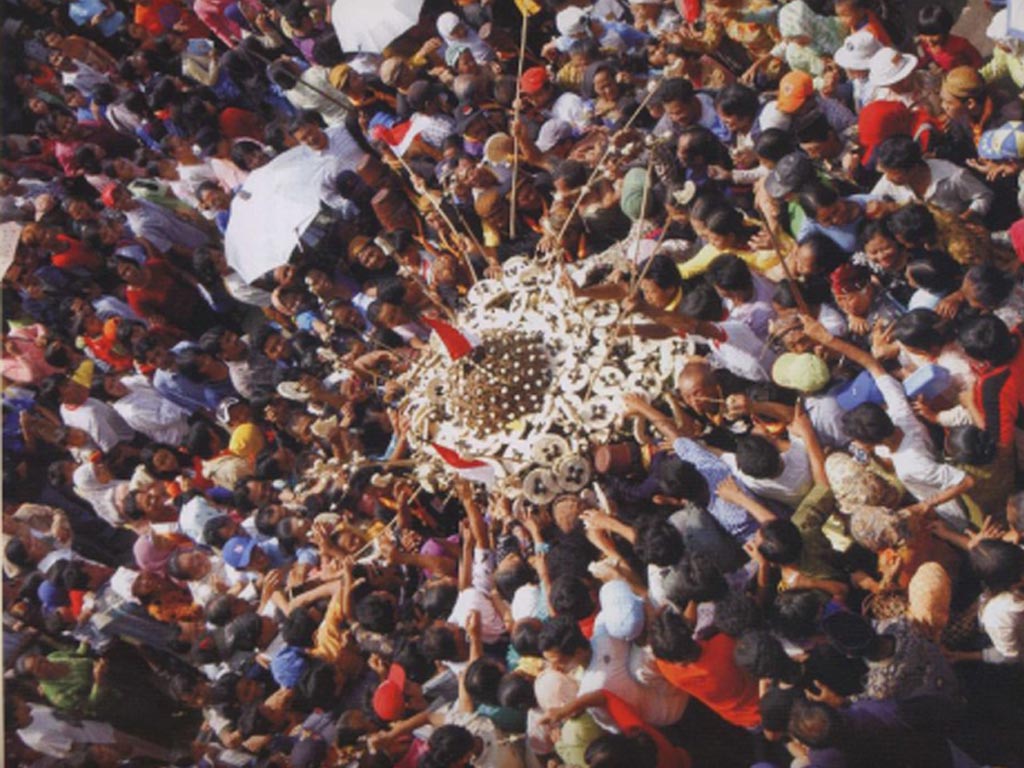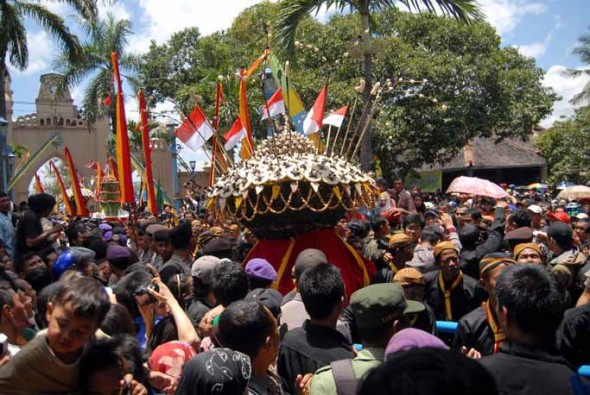Sekaten become a tradition that still continues to be preserved by the people of Yogyakarta because it has strong historical roots. Held for the first time since 15th century in the Demak kingdom under the reign of Raden Patah, the Sekaten celebration was especially designed by the wali (pious Muslim missionary) to propagate Islam.
Sekaten actually comes from the word "syahadatain" creed sentence or two that became the strategy of the saints in spreading Islam in the land of Java, so it can be said that the historical roots of that tradition has lasted long enough.
Cultural events which can be seen directly in Sekaten celebration, beginning with the procession "miyos gangsa" that is out of palace gamelan "Ngayogyakarta" named "Kanjeng Kyai Guntur Madu" and "Kanjeng Kyai Naga Wilaga" are brought to the palace's Masjid Gedhe to be played continuously, except on Fridays, until the whole celebration is over on Maulud 12.
Before it is brought to the mosque and placed at two special halls at the front of the mosque, the instruments are played at the palace's Bangsal Ponconiti hall. These are then paraded through the Alun-Alun Utara square, immediately south of the twin banyan trees known as ringin kurung, to the mosque. The traditional soldiers from the palace follow.
From this time onward, people selling goods particularly associated with Sekaten like ndog abang (red eggs), pecut (whips), sega wudhuk (rice cooked in coconut milk), and kinang (betel leaves) are also quite noticeable.
The instruments are returned to the palace on the eve of Maulud 12, in a ceremony known as kondur gongso, during which the sultan attends a commemoration of Prophet Mohammad's birthday at the mosque to listen to the story of the Prophet being read outloud. The peak celebration is held the following morning. It is known as garebeg, during which the palace distributes gunungan, or cone-
shaped offerings, to the public.
There are normally five different gunungan distributed during the garebeg ritual. They are: gunungan lanang, gunungan wadon, gunungan darat, gunungan pawuhan and gunungan gepak. Each has a particular symbolic meaning. The community traditionally believes that eating parts of the offerings will bring them good luck.
The series of cultural activities as well as the end of Sekaten then marked with an "Bedhol Songsong" or performing "wayang kulit" all-night in the Exhibition Palace Ngayogyakarta.
Meanwhile, a series of economic activities also manifested in the form of public market or called Sekaten Celebration Night Market (PMPS) that was held for 40 days. Visitors who enter the arena PMPS will immediately be treated to a variety of folk entertainment and potential winning crafts from all regions of the city of Yogyakarta.
Source: tourjogja.com
photo: soloculture.blogspot.com
photo: kabarjoz.blogspot.com
photo: deaanimation.blogspot.com








 Reply With Quote
Reply With Quote

Bookmarks